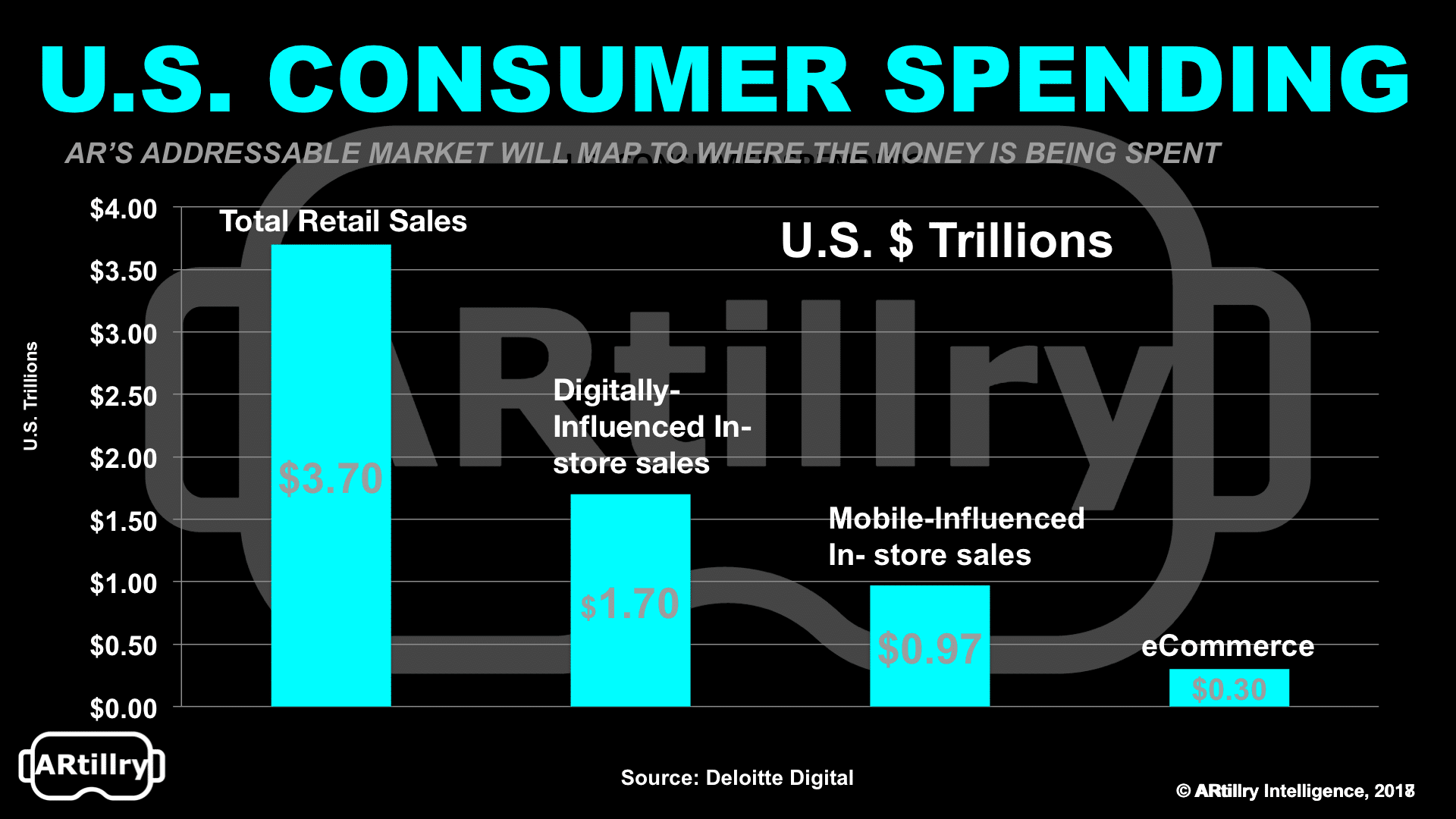
ARtillry Briefs is a video series that outlines the top trends we’re tracking, including takeaways from recent reports and market forecasts. See the most recent episode below, and past installments are here.
Among several areas where AR will apply, one of the most exciting and potentially lucrative is local commerce. This includes consumer spending that’s consummated offline, and usually in proximity to one’s home. AR will help us discover products and qualify buying decisions.
As context, it’s often overlooked that most consumer spending happens offline in the physical world. Despite all the attention to e-commerce, it only accounts for eight percent of consumer spending. The remainder – about $3.7 trillion in U.S. spending – is brick & mortar.
But that’s not to downplay digital technologies. Online media – including desktop and mobile – has a big influence on that offline spending, to the tune of about $1.7 trillion in U.S. spending. This is known in the search and advertising worlds as “online-to-offline (O2O) commerce.
This is where AR could take a bite. Just think: is there any better technology to accelerate O2O commerce than one that literally melds physical and digital worlds? AR can shorten gaps in time and space that currently separate digital interactions (e.g. search) from offline outcomes.

This will play out in several ways, including informational overlays that add context and commerce to items you point your phone at. It’s everything from restaurants, to shoes you see worn on the street. Not only does it offer consumer utility but taps into buying intent (read: monetization).
But before we get too carried away in blue-sky visions – as is often done in XR industry rhetoric, trade shows and YouTube clips – it’s important to acknowledge realistic challenges. There are several interlocking pieces, including hardware, software and the AR Cloud.
Coined by Super Ventures’ Ori Inbar, the AR cloud underpins the AR future many of us discuss. In short, it’s a cloud repository of geo-relevant data and object blueprints that will empower far-flung AR devices with contextual and situational awareness. It’s requred for an “Internet of places.”
But how will the AR cloud be built? Who will own it? How will data be indexed and accessed? And how will AR devices translate that into AR on the front end? These are questions that will define the next era of mobile AR. And they’re questions we tackle in the latest ARtillry Briefs episode.
See the episode below, preview the report that it’s based on here, and stay tuned for more written and multimedia commentary.
For a deeper dive on AR & VR insights, see ARtillry’s new intelligence subscription, and sign up for the free ARtillry Weekly newsletter.
Disclosure: ARtillry has no financial stake in the companies mentioned in this post, nor received payment for its production. Disclosure and ethics policy can be seen here.
